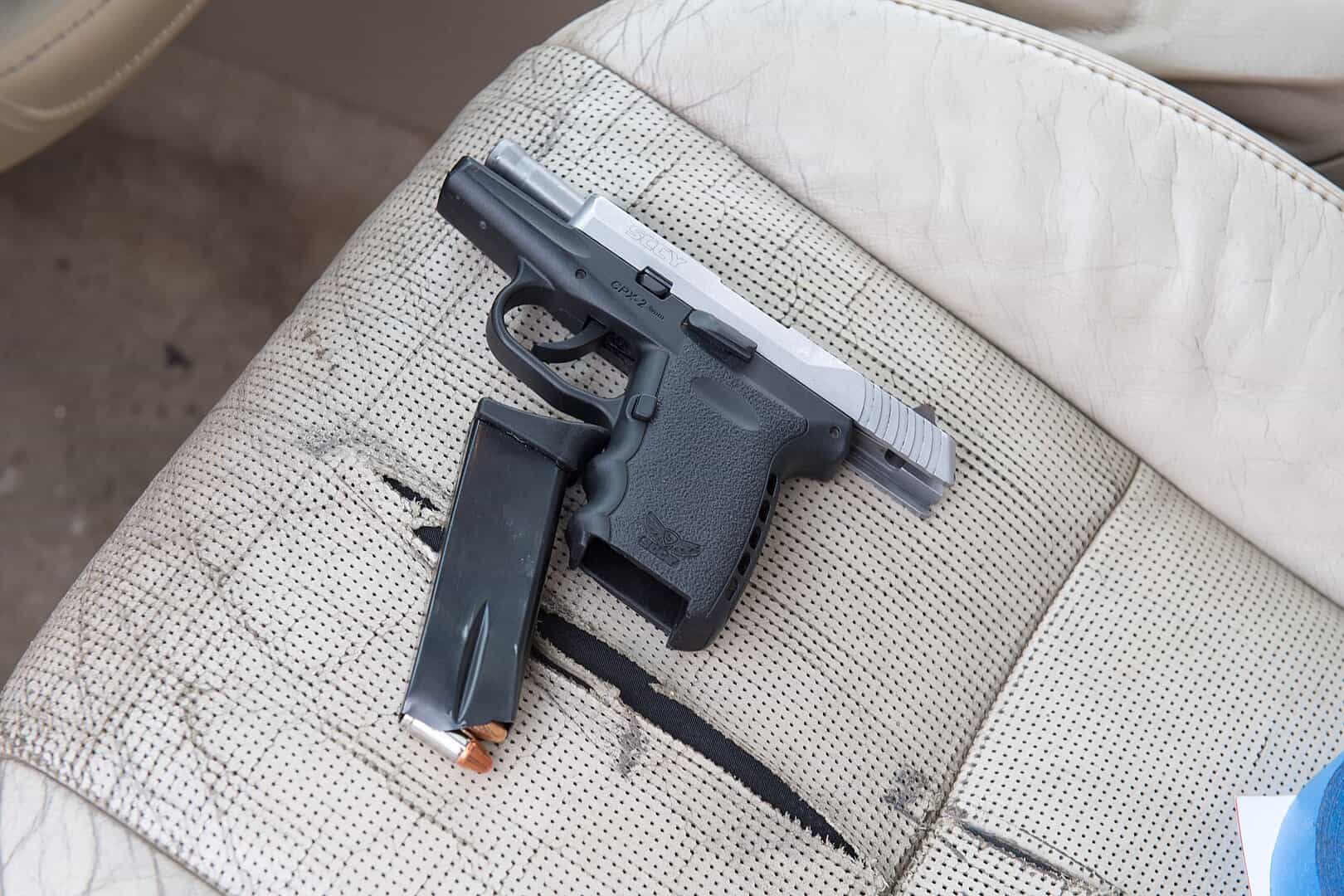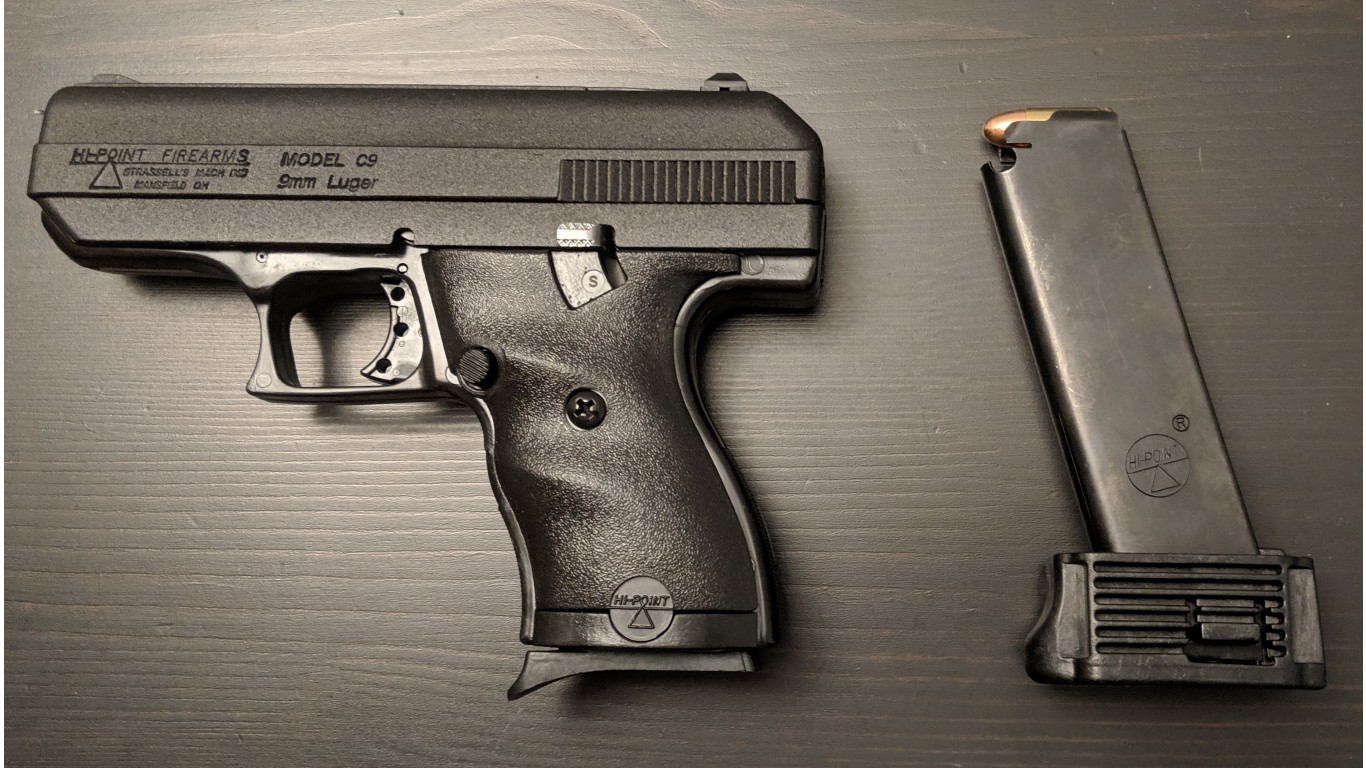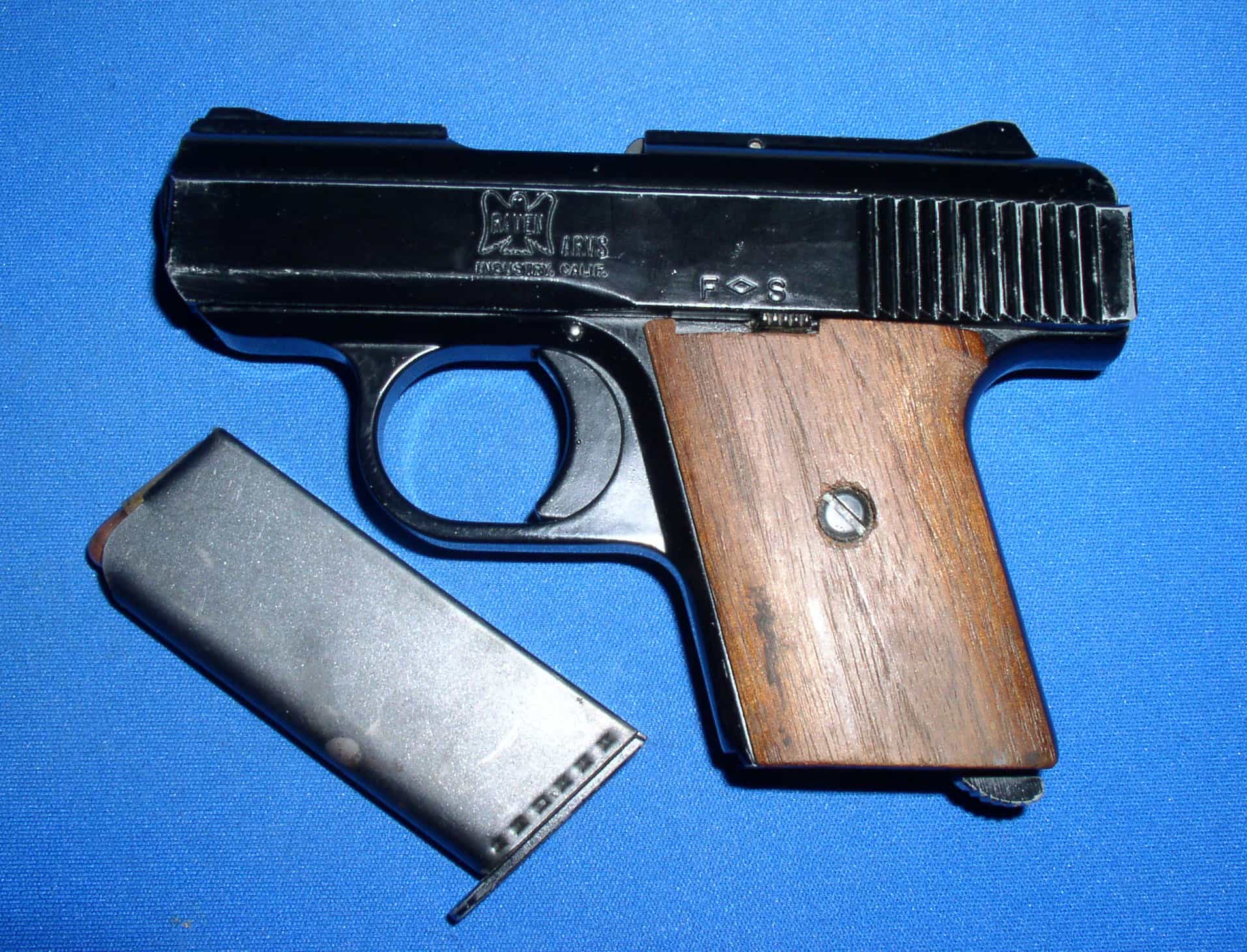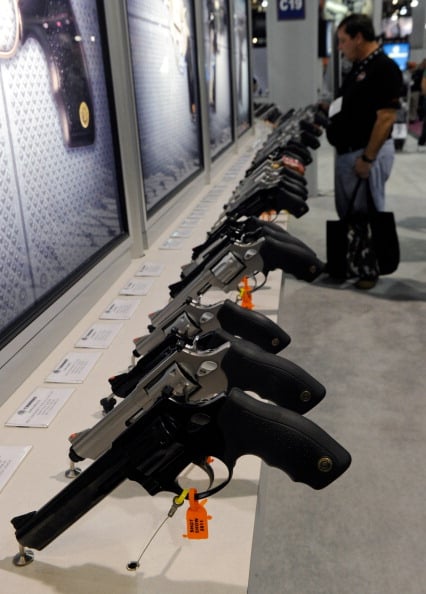
Most self-respecting gun owners are familiar with the brands that tend to receive widespread acclaim for the quality of their firearms. Those widely-known gun brands — Sig Sauer, Ruger, Glock, Smith & Wesson, benefit from their reputation at the gun store. However, there are also lots of brands out there that don’t have as positive a reputation. Some of these brands are newer and known for their more budget-friendly guns. Others are decades old and may have, according to some, gone down in quality recently.
In any case, there are lots of firearm brands out there that are generally considered “the worst.” Of course, this is subjective in nature. If no one bought guns from these companies, they wouldn’t be around!
Below, we’ll take a look at, in the opinion of this author, the worst gun brands in America:
Editor’s Note: this is an opinion piece, reflecting the personal preference of the author. It in no way reflects the position of 24/7 Wall St. or its partners.
8. USFA
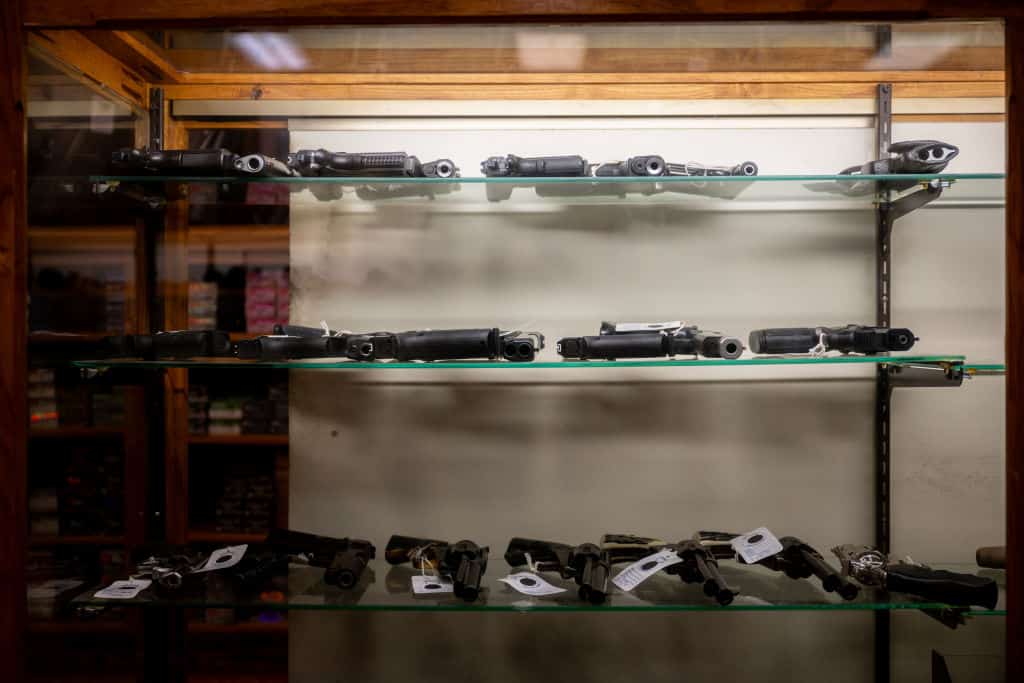
USFA is a strange gun manufacturer. Some of their guns are fantastic, but they’re all a bit different from what we’d consider a modern firearm to be. While this company had a lot of glowing praise, its reputation has largely gone down the drain since it ceased production in 2006.
The biggest negative about this gun is its poor design. They are historically accurate, so many people like them for collection purposes. However, for actual use, the design is flawed. For instance, to charge the gun, you have to pull back a small bolt near the barrel.
As you might guess, the last thing you want to do with a loaded gun is put your fingers where the bullet comes out.
Despite this, these guns are much more expensive than others on the market. Their appeal was limited to a very small, niche market. Finding replacement parts is often challenging, and they tend to be exceedingly expensive when you can find them.
7. SCCY
SSCY is known for producing budget-friendly pistols, like many brands on this list. Some gun enthusiasts love them for their low price point, making them accessible to various consumers.
There are many negative reviews about SCCY, though, largely because their guns are built cheaply. The company’s triggers tend to be low quality. They are heavy with a jerky pull. The mushy trigger can cause problems with accuracy, especially for new firearm owners.
Many poorly reviewed their grip texture, too. The grip tends to be very slick, especially on sweaty hands. Most reported having difficulty controlling the recoil because the gun is so slippery. These pistols are lightweight, so they also tend to have more recoil. You may find yourself less accurate with these firearms.
Compared to higher-quality brands, SCCY pistols lack many features that are considered must-haves today. For instance, many are not optics-ready and don’t have light-ready rails.
6. Sundance

The nephew of Raven Arms founder George Jennings founded Sundance. As you might imagine, these two gun brands have much in common.
The company shut down in 2004 after legal and financial troubles. Therefore, their firearms are no longer manufactured, although plenty remain around used gun shops and closets. Sundance largely focused on producing budget-friendly pistols that could fit into your pocket. They were marketed to women often due to their small size.
Sundance firearms were simple in design, with very few added features. They were often made out of zinc, which is much weaker than steel and aluminum. Therefore, their pistols were prone to misfires and jams as the zinc wore down.
Ultimately, there were many safety concerns surrounding Sundance pistols. Several lawsuits came forward surrounding alleged defective firearms. These issues eventually led to the company closing.
5. Lorcin

Lorcin was a firearms manufacturer that existed from 1989 to 1998. They made very affordable zinc alloy pistols that were mostly attractive due to their lower price. Like many budget firearms, though, they also had several negative factors that eventually led to the company going out of business.
Most dangerously, Lorcin handguns were known for frequent malfunctions, including misfires and jams. These were caused by the gun’s weak zinc frames, which were prone to deformations and cracking under stress.
The company also had unreliable safety features and poor triggers, which caused accidental discharge.
Zinc is notoriously weaker than steel or aluminum despite being much cheaper. Lorcin firearms were more susceptible to wear for this reason. They weren’t suitable for long-term use or heavy shooting, as they broke down much faster.
Some of these guns are still available on the secondhand market in America. Production ceased in 1998, so finding replacement parts or accessories is nearly impossible. Most models didn’t have aftermarket support.
4. Hi-point
Hi-point is another polarizing brand. These guns are made to be some of the cheapest around, with some models costing less than $200. They’re some of the most affordable guns around. However, you’re often getting what you pay for.
These pistols are typically made with a plastic frame with several polymer components. Practically everything is plastic but the slide, which is metal. They lack a lot of the premium “feel.”
Despite being plastic, which is often lightweight, Hi-point firearms are also known for being bulkier and heavier. They’re less comfortable to conceal carry for this reason. It’s mostly an ergonomics issue.
Hi-point triggers tend to be long and mushy. There isn’t a clear wall, impacting accuracy. The pull weight also tends to be high. These guns are also very basic. They don’t usually have adjustable sits, rails, or threaded barrels. Most aren’t optics-ready, so you’ll need to spend extra money getting them drilled if you want a sight.
Plus, these guns just don’t look very good. They’re blocky and utilitarian, which many gun enthusiasts do not like.
3. Taurus

Taurus is a Brazilian gun manufacturer. This brand has very big supporters as well as passionate detractors. Some people love them, while others hate them.
In the past, Taurus has struggled with quality control and manufacturing problems. Like many poor brands, they have improved over the last few years. However, malfunctions and finish imperfections are still around and regularly reported.
Many reviewers also dislike the trigger, which is criticized for being heavy and inconsistent. The trigger is how you interface with your firearm. So, if the trigger is bad, the rest of the gun might as well be bad, too.
Taurus has very little aftermarket support compared to major brands like Glock and Sig Sauer. Very few aftermarket parts and accessories are available, which is a major downside.
That said, supporters of Taurus argue that these firearms are more affordable than much of the competition. They’re attractive to those on a strict budget. Taurus has also been willing to innovate, too. Their most recent handguns have different ergonomics than past iterations, leading to several quality reviews.
2. Jimenez

Jimenez Arms has gone through many acquisitions and name changes. The company now operates as JA Industries, but it was previously known as Jennings. They’re known for their extremely budget-friendly pistols, but their reputation is far from spotless.
This gun brand is known for being poor quality with serious reliability problems. There are many reports of malfunctions, jams, and accidental discharges. The brand has also been criticized for lacking proper safety features, such as an internal safety.
Many users have reported lower accuracy with these guns compared to more well-established brands. Of course, not every gun suits everyone, so that may also be at play.
Reviews of the company’s customer service are often negative, too. There are long wait times and often no responses at all.
1. Raven Arms
Raven Arms is mostly known for MP-25 pistol. This pistol (and others by the company) is notorious for being cheaply made. They use zinc alloy frames and slides, which are prone to breakage, rust, and fragility. Simply put, they don’t stay together very well.
Early Raven Arms firearms also lacked basic safety features, leading them to discharge accidentally. While later models did improve, even modern handguns have a light trigger pull and few (if any) external safeties.
Many people also point out that .25 ACP cartridges have minimal stopping power. They may be less effective in self-defense compared to other calibers. Plus, finding.25 caliber is nearly impossible.
Raven Arms ceased production in 2006. However, used models are still widely available and very inexpensive. That said, Raven Arms has a reputation for being involved in crime, likely due to its price. Therefore, you may have some difficulty finding one at a professional dealer.
This gun’s affordability is one of their biggest positives. They are very accessible to budget-conscious buyers, one of the largest reasons they were popular initially.
Are You Ahead, or Behind on Retirement? (sponsor)
If you’re one of the over 4 Million Americans set to retire this year, you may want to pay attention.
Finding a financial advisor who puts your interest first can be the difference between a rich retirement and barely getting by, and today it’s easier than ever. SmartAsset’s free tool matches you with up to three fiduciary financial advisors that serve your area in minutes. Each advisor has been carefully vetted, and must act in your best interests. Start your search now.
Don’t waste another minute; get started right here and help your retirement dreams become a retirement reality.
Thank you for reading! Have some feedback for us?
Contact the 24/7 Wall St. editorial team.
